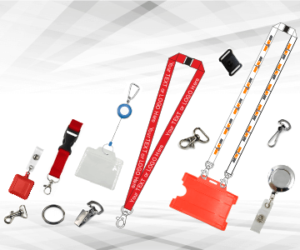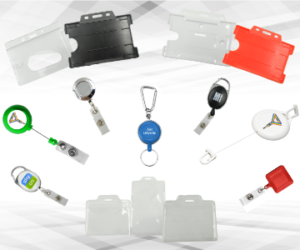Lanyards first came into existence in the 15th century, helping military personnel hold weapons and tools. They are simple and versatile, which has led to them making a big impact on the world. Today, lanyards are used for a range of different practical purposes like promotional materials, safety accessories, gadget holders and, of course, for holding ID cards. So how are these wonderful creations made?
Choosing the right lanyard type
The first step is choosing the materials to work with. The common lanyard types are:
| Nylon | Tubular | Polyester | Woven |
|---|---|---|---|
 |
 |
 |
 |
They are manufactured from either nylon or polyester due to their qualities of being lightweight, durable and easy to maintain. As synthetic fabrics they also resist mould and mildew, and are not easily stretched or shrunk. In short, these materials ensure lanyards are built to last.
Cutting the material to size
Once you have chosen the lanyard type, a large, dyed piece of fabric is fed into a special machine that cuts it to the appropriate size. Lanyards are most commonly manufactured at 5/8 inch, 3/4 inch and 1 inch. Tubular lanyards are a little different: several polyester threads are braided together by the machine. This means the lanyard can stretch slightly when pulled, which is useful when carrying heavier items like cameras.
Printing/stitching the design
Lanyard designs commonly feature company names and logos. It’s best not to go for an overly complex design, so that it is simple to replicate and doesn’t look tacky. It is recommended that neat, solid fonts are used for readability. Printed lanyard designs generally use a silk screening process using quality inks for best results. With woven lanyards, the design is usually stitched in a similar process to embroidering on t-shirts. The result is a slightly textured feel, and again it’s best to stick to simpler designs.
Adding the attachment
The attachment can usually be chosen from several options. You can include one of several choices, such as:
- Split rings
- Bulldog clips
- Metal/plastic swivel hooks
You can also choose specialist things like a mobile phone loop, a badge reel, a plastic buckle, a badge holder or a breakaway clasp. A lanyard can even be produced without any attachment, depending on your needs. Lanyards are not a complicated concept, but the design and usage are actually quite sophisticated. They are a versatile solution, and will certainly be around for many years to come.





